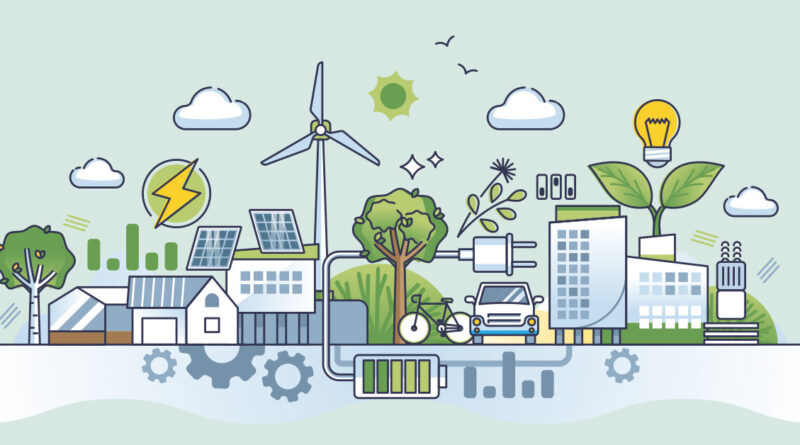M&G’s guide to investing in the energy transition beyond renewables
Renewable energy infrastructure and clean technology suffered an annus horribilis last year, hit by higher interest rates, profitability concerns, supply-chain bottlenecks, and inflationary pressure on costs, while authorities around the world wavered on their decarbonisation commitments.
Valuations are much cheaper as a result, which might entice some investors. There have already been green shoots of recovery, which emerged at the end of last year after rates peaked.
Nonetheless, investors who want exposure to the energy transition may prefer to build a broader portfolio of opportunities, looking beyond renewable energy. To that end, fund managers at M&G Investments have uncovered myriad ways to benefit from the energy transition across multiple sectors and regions.
Japan is providing the building blocks for a lower-carbon world.
The Japanese equity market captured the imagination of investors with its best performance in a decade last year, but even so, Japan’s role in the energy transition is often “overlooked,” according to Carl Vine, manager of M&G Japan.
“We estimate that approximately one-third of the large-cap benchmark in Japan, excluding financials, has energy transition as a key underlying business theme. As it happens, in 2023, this cohort of stocks outperformed the broader market, on average, by around 600 basis points,” he pointed out.
M&G invests in Hitachi, Orix, and Toyota, all of which are involved in the energy transition, but these names are just the tip of the iceberg.
“Japanese heavy industrial companies have their fingerprints all over various aspects of the hydrogen economy, and, in the start-up innovation space, Japan occupies essential positions in nuclear fusion technologies,” Vine continued.
Asia will be the key battleground in the fight against climate change.
Investing in China’s energy transition has been “treacherous,” admitted Dave Perrett, who manages the M&G Asian Fund.
“After an initial wave of positive flows in Chinese, and for that matter Asian, energy transition stocks, this portion of the equity market has become increasingly treacherous. Huge increases in capacity for commodity renewable items such as polysilicon have ultimately outstripped demand and led to falling prices. Now we have an incredibly competitive environment where only the fittest survive and where returns on invested capital have been crushed lower,” he explained.
To navigate this, M&G has adopted three approaches: identifying parts of the renewable supply chain with high barriers to entry; focusing on commodity producers with economies of scale; and identifying industries that will benefit from the transition, such as shipping and ship building.
Jiangsu Zhongtian, a niche cable maker listed in the Chinese A-share market, exemplifies the first approach.
“Zhongtian specialises in both making the cables and then providing the engineering services that connect offshore wind farms to the onshore power grid. The service it provides is both complex and critical in nature, and, as a result, there are only three certified players in China, of which Zhongtian is one,” Perrett said.
Artificial intelligence will make energy usage more efficient
Artificial intelligence (AI) will drive huge increases in electricity consumption, but it also has a role to play in managing the supply and demand of electricity, said Jeff Lin, head of thematic equities at M&G.
“Wind and solar energy are not always available, either because of the time of day or the weather. Based on weather predictions and, hence, available power, non-critical electrical loads can be shifted to more favourable times. AI can recommend reducing power consumption and storing excess power in batteries ahead of adverse weather that could reduce available power,” he explained.
“Companies such as Schneider Electric and Microsoft are working together to transform grid management with the goal of maintaining grid reliability and accelerating customer adoption of distributed energy storage resources, including electric vehicles and rooftop solar.”
The transition will boost demand for copper and aluminum
Electricity transmission, distribution networks, and renewable energy infrastructure will all require more copper and aluminium, said Sylvia Baxter, a global materials analyst at M&G.
“In 2023, the copper price fell from a high of $9,356 per tonne in January 2023 to circa $8,500 per tonne at year-end, and it actually dipped below $8,000 in October. Despite that fall, it’s still trading above the 90th percentile (with the cost of production at c. $7,000–$7,500 per tonne). And there are seen to be strategic physical buyers such as China that are likely to step in around those levels,” she explained.
“So while copper is trading above the cost curve, there is theoretically around 10% downside risk from here.”
Aluminum producers will benefit directly from increased demand for electric vehicles and wind turbines and indirectly if aluminium is used as a substitute for copper due to a shortage.
“Near term, the market has been affected by macroeconomic-related headwinds, particularly in Europe. Given the relative difficulty in flexing capacity within aluminium, it has likely reached, or is near, a floor,” Baxter said.
Source : trustnet.com




